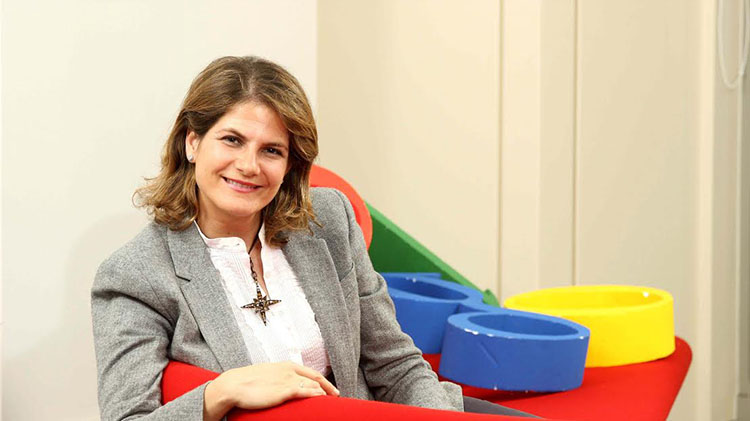According to the latest report by the Spanish workers’ union Unión General de Trabajadores (UGT), “Mujeres y Tecnología” (Women and Technology), in 2015, only 17.4% of workers in the ICT sector were women. The report also shows that women earn around 20% less than their male peers in this sector.
To celebrate Women’s Day, we have talked with five women who work in the technology sector. They have given us their first-hand opinion of women’s role in the industry and how they feel the differences in relation to their male peers.

We asked Koro Castellano, Head of Kindle Spain (Amazon), about the famous glass ceiling. This executive thinks that there is still a long way to go but that there measures being implemented to achieve greater equality. In this context, she states that “if there was a time when we could break this glass ceiling, the time is now. Firstly, social awareness is increasing; women are assuming increasingly more important roles in business life; and leading technology firms are taking the promotion of diversity very seriously”.
In any case, Castellano thinks that it is essential that society changes: “We can’t place the responsibility for promoting equality solely on the shoulders of the business world. Families should also change their behavior patterns and, in short, their role distribution. For example, we must promote technology vocation among women. This is a key factor. We need more female engineers, more female talent in technical degrees. This will allow us to achieve bottom-up job equality”.

Fuencisla Clemares, Country Manager for Google Spain and Portugal, believes that “we need to keep working on making women’s capacities and skills visible and showing that worth is not about being a man or a woman, it is about being a person”. In the case of Google, Clemares adds that the company has been publishing its diversity figures for several years at Google Diversity.
According to the World Economic Forum, the gender gap will be bridged in 2133 in the ICT sector. In this context, Clemares thinks that “it would be unrealistic” to want to reduce this figure quickly. However, she believes that there are ways of making progress. For example, she points out that Google is developing educational programs about digital skills and capacities within school syllabuses such as the Genios program, which Google implemented together with Ayuda en Acción. Other examples are Made with Code, a worldwide project that teaches young girls how to program and Women Tech Makers, which gives visibility and connects women within the world of technology.

Victoria Yasinetskaya
The Marketing Director of Strands, Victoria Yasinetskaya (she publishes content about fintech in Strands’ website), talks more specifically about the sector that combines finance and technology. Victoria uses the term femtech to talk about women who work in the fintech or financial services sector. This concept is explained in greater detail in her article: “La enorme contradicción en FinTech: el caso de FemTech” (The great contradiction in FinTech: the case of FemTech).
Yasinetskaya states that “the fact that there are so few women in fintech represents a contradiction for a sector that seeks to innovate and understand consumers better. Even though 80% of shopping decisions and management of household finance depend on women, only 7% of fintech companies have a female presence. This gap stems from two factors: 1) the financial and technology sector is dominated by men and it will be a long time before this changes; 2) leadership roles are dominated by men.”
Yasinetskaya believes that is only a matter of time until existing startups led by women become a success story and we starting talking about them like we talk about Apple. “Also, the second top executive in Facebook is a woman, Sheryl Sandberg, COO, and she is a role model for many women in the technology sector”.

In the early 2000s, Marta founded Rentalia and Toprural, two portals for renting holiday properties. Four years ago, she embarked on a new project called Soysuper, an online supermarket aggregator founded and headed by Marta as the CEO. Given her experience in the world of entrepreneurship, we asked her why there is no woman leading the top international technology firms. In her opinion, this is due to the fact that there are not many women doing technology or engineering degrees and, as such, there are fewer women entrepreneurs; and to the fact that the lack of female role models does not help to promote female entrepreneurship. For this reason, Marta believes that we must get technology closer to young girls “because there is a clear gender difference from an early age”.
Esteve believes that there is a glass ceiling for women albeit for many and very diverse reasons. Often, according to Esteve, limits are set by women themselves because “you need to push a lot against the current and, in the end, we decide to take the foot off the accelerator. If logistics were simpler, if there were more family support and women found more support within their network of contacts, there would likely be more women in management positions“.
The founder of two of the first Spanish websites to post negative user reviews believes that the fact that women earn less seems to reflect the fact that society thinks that hiring a woman involves a cost and, as such, women must be better at marketing themselves. She is not sure that positive discrimination makes a big difference but she thinks that an effective strategy consists in “conveying and making it clear what the benefits of women in management positions are, such as not overlooking about 50% of customers.”

CEO and head consultant at e-growing, where she offers consultancy and online and mobile strategy services, Estorach mentions how gender differences start in our childhood: “Girls are given computers later than boys and, as a result, we unconsciously assimilate the idea that we need to be the ‘babysitters’ of dolls. Science (2017) magazine recently published a study which states that girls start thinking they are less bright than boys when they are six years old. And if these girls want to build things or play with their computer and their interest makes them think about taking a degree in engineering, it is still likely that their family and friends will encourage them to pursue other careers”.
The co-founder of the community of women that work in the mobile industry in Barcelona, Women in Mobile, believes that the public image of IT and other related sciences is not good. “It doesn’t help that there are articles that focus on worn-out topics to describe founders of technology firms or developers of algorithms as frustrated or maladjusted individuals.” Vanessa Estorach thinks that programming should be taught at school in the same way as you teach English since “it is just another language and it will be the foundation for many of the new professions in this century”.
Estorach also mentioned that the Athena Factor report (quoted in Harvard Business Review, 2016) indicates that 41% of women that join the technology sector leave it after 10 years of professional career vs. 17% of men. “The key factor is the hostility toward women in a masculinized environment. This hostility consists of lower wages, less internal promotions and sexism, among other factors.”
According to Estorach, work/life balance and job flexibility are also key factors. However, many technology firms are already working on making it easy, for instance, for women with children to strike a balance between their personal and professional lives by working less hours or working from home. Also, “women find it harder to obtain funding.” In fact, according to the Harvard Business Review (2016), “in high-performing technology startups that have been funded with venture capital, only 9% of entrepreneurs are women.” In Vanessa’s opinion, ICTs are designed and managed as a “boys’ club” and, as a consequence, men and women must work to change this situation and transform it into a sector with a more inclusive and kinder environment.
As for the measures they would take to bridge the gender gap in the sector, the interviewees agree that education is the key. It is essential to promote the learning of new technologies among girls from early in their school years, and for them to see they have the same chances of succeeding in this sector as any man.
Are you interested in financial APIs? Discover all the options offered by BBVA
















